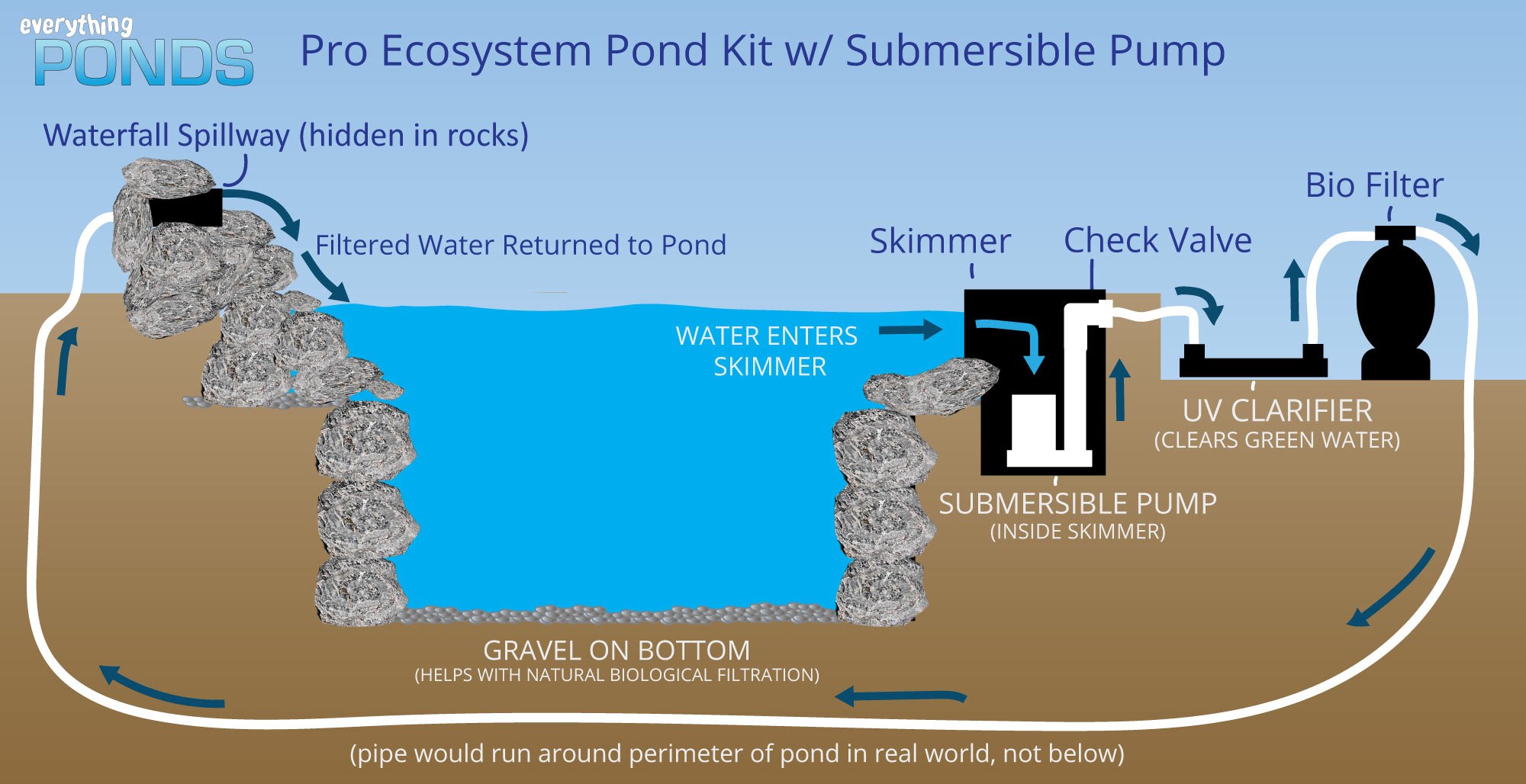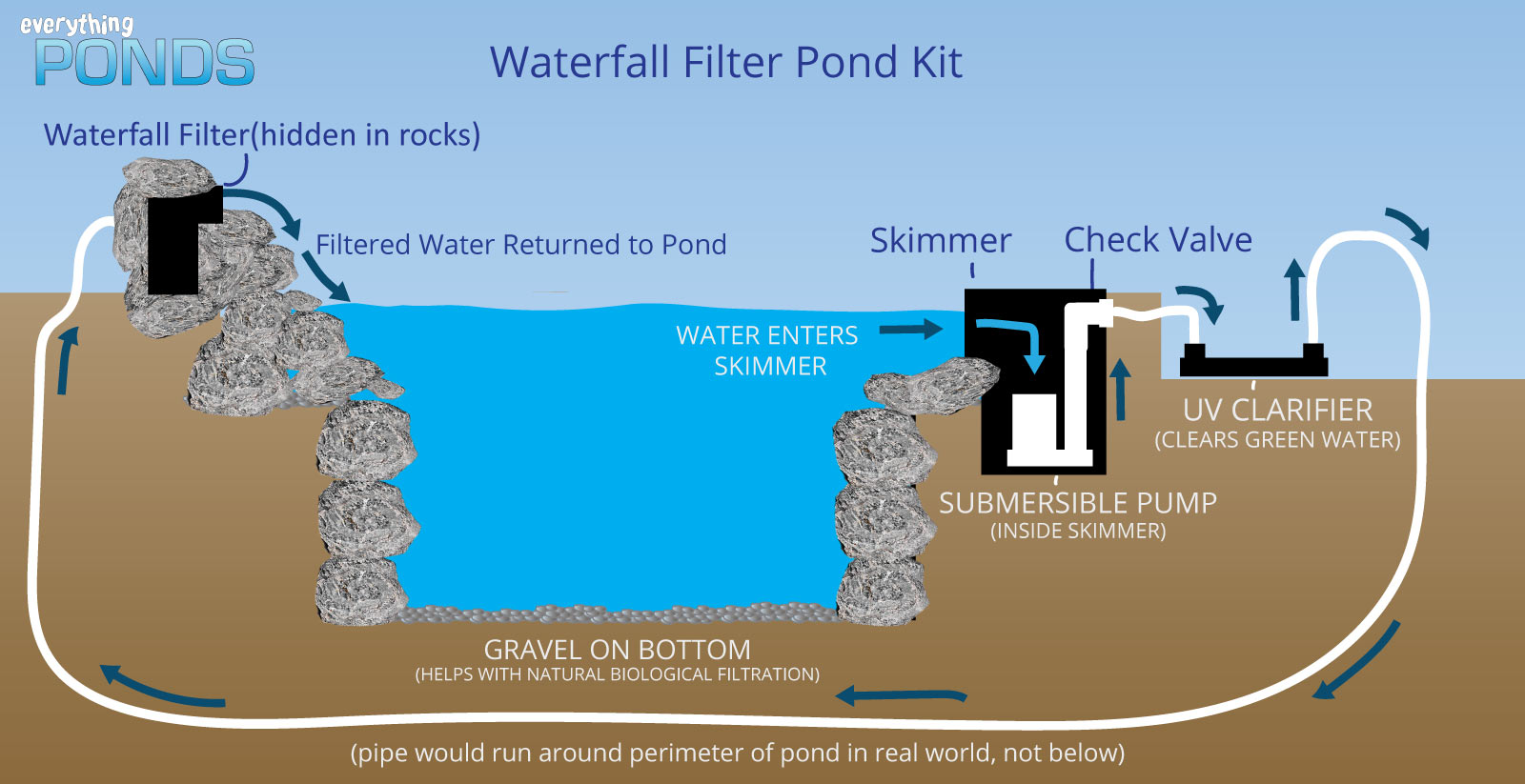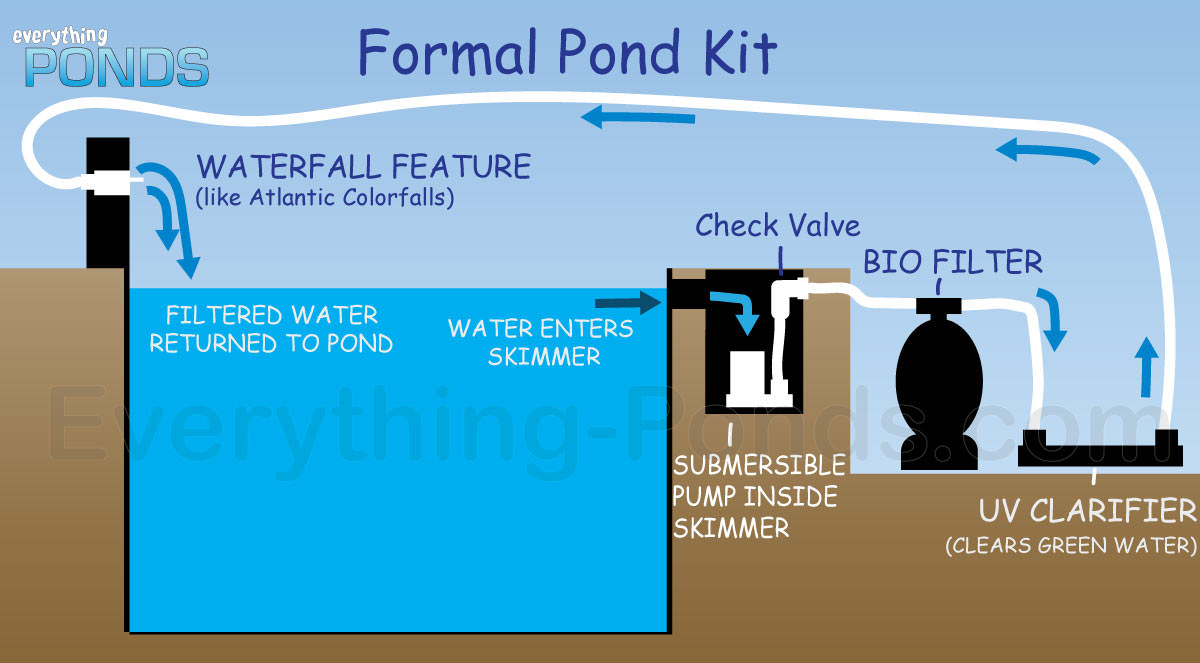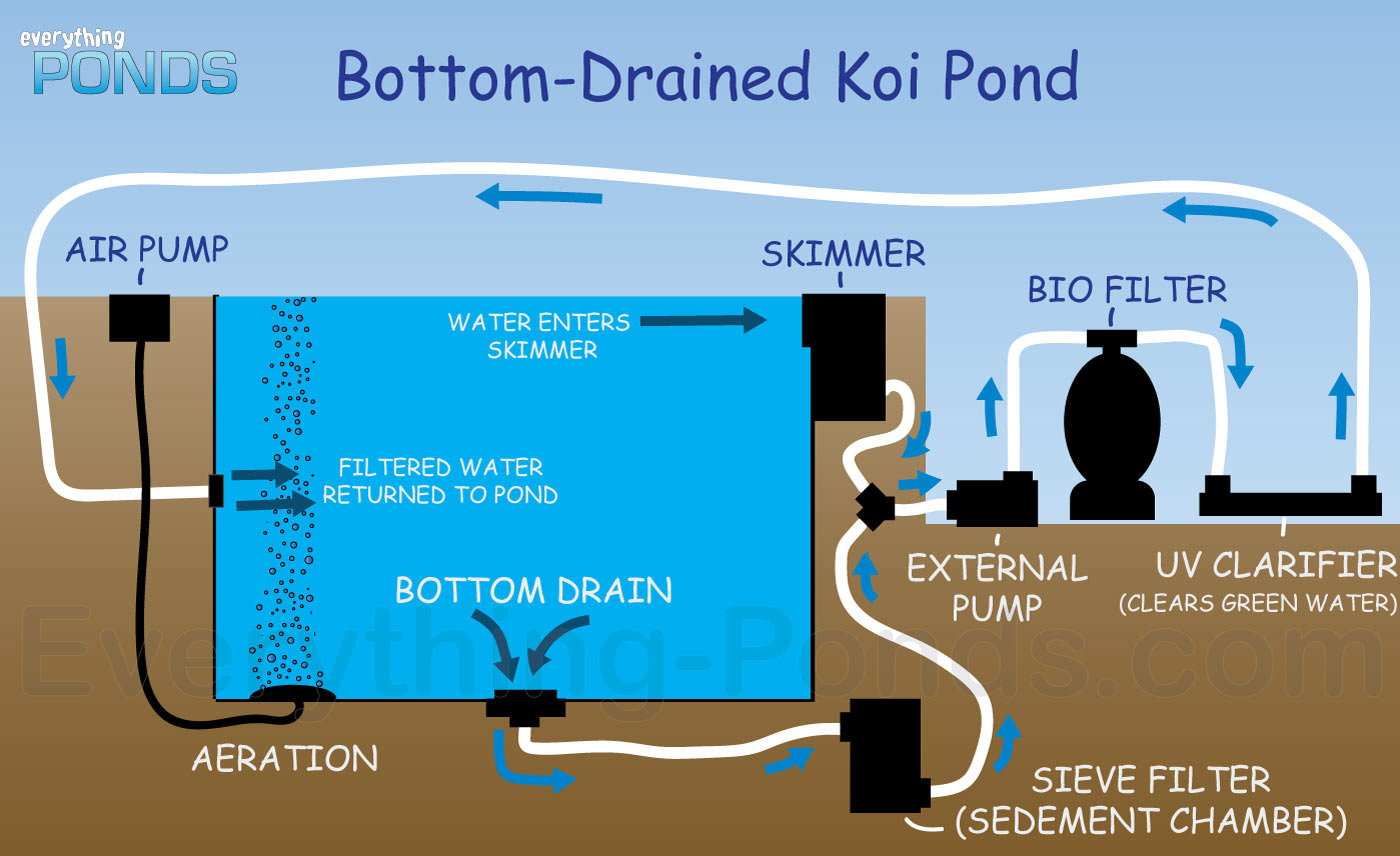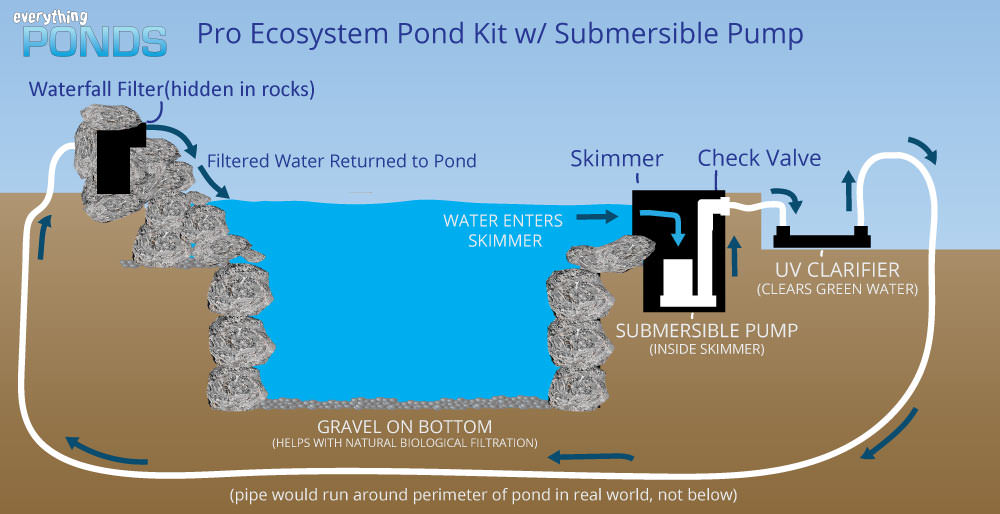Pond Kits
We get it. Choosing equipment for a pond is confusing. We've taken the guess workout out of choosing equipment with our customizable pond kits.
All our pond kits are designed to make choosing and purchasing pond equipment as painless as possible. Each piece of equipment in the kit has been hand-picked by a pond expert specifically for the type of pond you want to build.
Custom Pond Kits for Small to Large Ponds
Scroll down for a full pond kit style comparison
How to Choose the Right Pond Kit
1. Choose a Pond Size
We have many different kits for all sizes of ponds. The first step to choosing a kit is to decide how big of a pond you want to build. Maybe you're thinking about a small rectangular pond that's 10' x 5' x 2' deep. Or maybe you want a larger, natural style fish pond that is 20' x 20' x 4' deep. Or maybe you're actually thinking about a very large pond or small lake. Whatever your plans, you'll want to nail down a length, a width and a depth for the pond. Once you know the size, user our Water Volume Calculator to figure out how many gallons would be in the pond.
2. Determine Flow Rate
This might sound like a complicated step, but it's really not. We size our kits differently than most other pond companies. Rather than give you a kit based on the physical size of the pond, we organize our kits by flow rate. Why do we do this? It's so our kits can be more flexible and used in more situations. For example, most people with a 2000 gallon pond will try to have a flow rate of around 2000 gallons per hour through their filtration system. If you want to keep things simple, start there.
However, some people will want more or less flow depending on their goals. For example, a 2000 gallon pond with an extra-large waterfall will require more than 2000 gallons per hour.
How do you choose a flow rate? Here's a rule of thumb:
For most reasonable sized fish ponds we recommend pumping the contents of the pond each hour. So a 2000 gallon pond will have a flow rate of 2000 gph. Easy.
If you don't have fish in your pond, you can still use this same flow rate for the best filtration results. However, if you're on a budget, some people will choose to relax the flow rate a bit. These people may choose to pump the contents of their pond every 1.5 to 2 hours to save on equipment. So for a 2000 gallon pond, they may choose a flow rate of 1000 to 1500 gph.
Even with fish, when the ponds get larger, lets say over 7500 gallons, unless the fish concentration is very high, most people will start relaxing a bit off their flow rate. If this is you, then have a look at the Aqua Ultraviolet Filters chart on our filters page for the flow rates that work for various sized ponds. For example, according to Aqua Ultraviolet, for a pond size of 10,000 gallons, you can likely get away with a 7500 gph flow rate.
3. Choose a Pond Kit Style
Now that you have the size and flow rate of your pond, you can choose the style of kit you want. If you don't feel like dealing with this, or are confused, we recommend going straight to our Ecosystem Pond Kits. However, we do have a few other styles of pond kits, which are described below.
Pond Kit Styles
The basic goal behind an ecosystem pond is to take an otherwise closed body of water and turn it into its own thriving mini “ecosystem.” In nature, streams and rivers and the resulting pools of water along the way are constantly renewed with fresh, clean water, allowing them to support life while flushing toxins away down the stream. Unless you are lucky enough to be blessed with a natural stream or source of water on your property, you won’t have the luxury of a naturally renewing water source. Instead, we have to keep the water clean with skimmers, filters and waterfalls.
Our waterfall pond kits are quite similar to the above ecosystem pond kits, except that instead of using an external pressurized filter, a waterfall filter is included instead. Waterfall filters are sometimes preferred because they make hiding the filter easier: the filter lives inside the waterfall itself and forms the basis for the waterfall spillway. Another advantage of waterfall filters is that they do not add any head pressure to the pumping system like an external pressurized filter does. This sometimes results in a slightly more efficient load on the pump. There are downsides as well of course to waterfall filters. External pressurized filters are much faster and easier to clean, which is why many people prefer them instead. With an external filter, you can clean it with no mess in only a few minutes. A waterfall filter is generally a more manual process for cleaning, which involves taking the media out of the filter and cleaning by hand. However, you can usually save a few dollars with a waterfall filter system as well, so if you're on a budget, a waterfall filter might be a great option. Please note that sometimes people will use BOTH kinds of a filters at the same time in a pond for extra filtration.
Formal style ponds and water gardens are usually more “formal” in regard to shape, uniformity and size. The goal isn’t to make the pond look natural, but to create a water feature with clean lines and an obvious symmetry. An example might be a rectangular, above-ground, Japanese style water garden. Features might include: Uniform shapes like rectangular, square or circular. Often built above ground slightly, but can be in-ground as well. Often built into man-made structures like decks, patios or walkways in formal gardens.
Other than a liner, an Everything Ponds Bottom-Drained KoiPond Kit contains everything you need to build a professional koi pond.These ponds typically have a different goal than either of the two kits mentioned avove - they are treated more like koi “pools” or koi “homes” meant to house a good number of expensive koi. This is in contrast to an ecosystem pond, where the goal is to create a natural-style pond that can survive as it’s own mini-ecosystem to support life in the pond. Ecosystem ponds can easily support koi and goldfish as well, but generally will have lower numbers of koi than a dedicated koi pond. Are you the type of person that might spend $1000 or more on a single koi? Then you’re also the type of person who is likely to install a full bottom drain system in your koi pond. Spending $50 per fish instead? Then an ecosystem pond kit discussed earlier on this page is likely all you’ll need.

